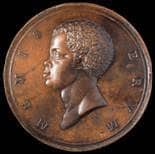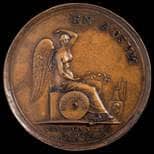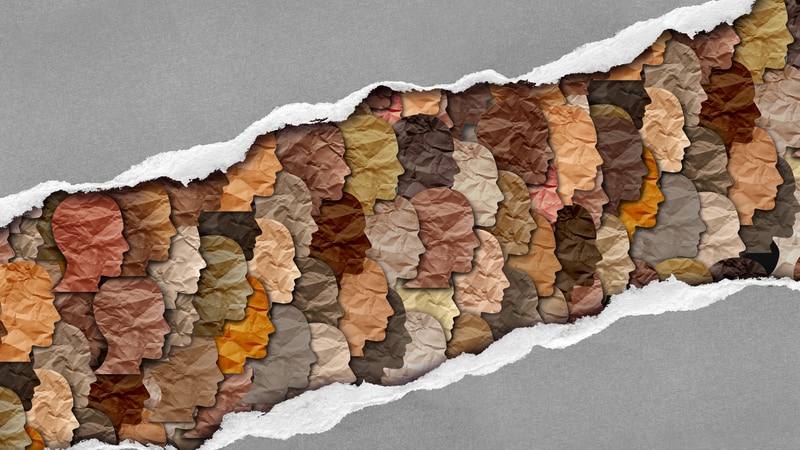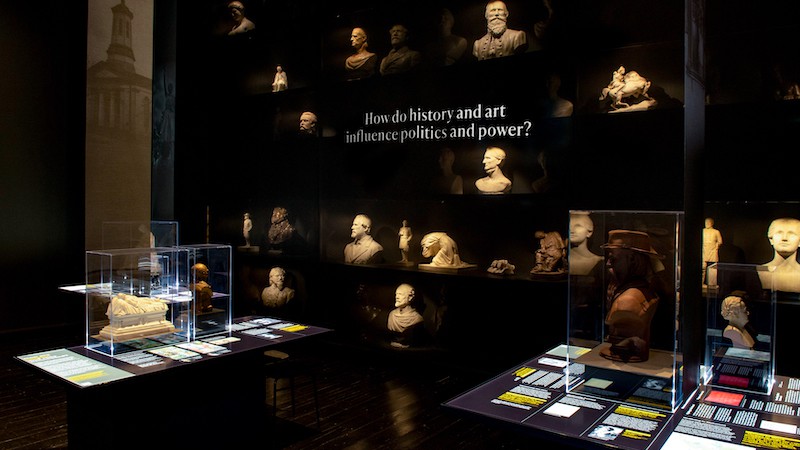Extremely Rare Danish Abolitionist Medal Acquired by the Colonial Williamsburg Foundation

 One of the most important medallic items related to the Atlantic slave trade and one of Denmark’s most iconic medals is now part of the Colonial Williamsburg Foundation’s collections. Designed by the Danish artist Nicolai Abildgaard and struck in bronze in 1792 from dies by the Italian medalist Pietro Leonardo Gianelli, the extremely rare piece commemorates that year’s royal edict ending trade in enslaved persons on Danish ships. Only a small handful of these medals produced in a variety of metals are known to exist: white metal examples are in Danish museums and others, held in private collections, were struck in bronze and silver.
One of the most important medallic items related to the Atlantic slave trade and one of Denmark’s most iconic medals is now part of the Colonial Williamsburg Foundation’s collections. Designed by the Danish artist Nicolai Abildgaard and struck in bronze in 1792 from dies by the Italian medalist Pietro Leonardo Gianelli, the extremely rare piece commemorates that year’s royal edict ending trade in enslaved persons on Danish ships. Only a small handful of these medals produced in a variety of metals are known to exist: white metal examples are in Danish museums and others, held in private collections, were struck in bronze and silver.
“The items of Colonial Williamsburg’s collections capture tangibly our complex, shared history,” said Mitchell B. Reiss, Colonial Williamsburg president and CEO. “In this rare 1792 medal we see an Atlantic power affirming the humanity of a people exploited as property, as well as a foretelling of abolition in America. We welcome our guests 365 days a year – and especially in February during Black History Month – to experience the diverse stories of our nation’s founding.”
In Denmark in 1792, as the move towards banning slavery was taking hold throughout Europe and two years before Congress prohibited the slave trade between the United States and foreign countries, Crown Prince Frederik VI, acting as regent for his mentally unstable father, Christian VII, issued what is considered to be the Prince’s most important proclamation: the Edict of the Abolition of the Slave Trade. This decree made Denmark the first European nation to outlaw trade in enslaved persons on ships flying its flag, though the measure did not fully take effect until 1802. This medal, made at the beginning of the abolitionist movement on the European continent, marks a dramatic shift in the way Denmark sought to treat the enslaved African population in the nation’s Caribbean colonies, the Danish West Indies. The male head depicted in profile on the face of the medal is likely the oldest Danish naturalistic portrait of an African. The Latin phrase “Me Miserum” (“Woe is me” or “Poor me”) is imprinted as a border around the profile. The reverse image shows the mythological winged goddess Nemesis, who was thought to be the avenging goddess of divine indignation against and retribution for evil deeds and undeserved good fortune. She is depicted seated and facing forward on a platform decorated with a shield that bears her name while holding an apple branch in one hand and touching her wing with the other. The Latin legends indicate the medal was produced under the Danish King’s law and includes the date of the edict, March 16, 1792.
“Objects in the Colonial Williamsburg collection are remarkable not only for their aesthetic qualities, but for the history they illustrate,” said Ronald L. Hurst, the Foundation’s vice president for collections, conservation, and museums and its Carlisle H. Humelsine chief curator. “This medal sheds light on some of the first steps toward the end of slavery, a painful chapter in the Atlantic world’s history.”
“This masterfully executed work of medallic art is a benchmark piece for two reasons,” said Erik Goldstein, Colonial Williamsburg’s senior curator of mechanical arts and numismatics. “Not only does it beautifully and sensitively display the portrait of an African man, it also marks the beginnings of the abolitionist movement in Europe.”
The medal was acquired through the Lasser Numismatics Fund and a partial gift by John Kraljevich. It is scheduled for public display in 2020 following completion of the entirely donor-funded $41.7 million expansion of the Art Museums of Colonial Williamsburg. Both institutions, the DeWitt Wallace Decorative Arts Museum and the Abby Aldrich Rockefeller Folk Art Museum, remain open throughout construction.
Released by the Colonial Williamsburg Foundation. Colonial Williamsburg and Art Museums tickets and additional information are available online at colonialwilliamsburg.com, by calling 855-296-6627 and by following Colonial Williamsburg on Facebook and @colonialwmsburg on Twitter and Instagram.
About the Art Museums of Colonial Williamsburg
The Art Museums of Colonial Williamsburg include the Abby Aldrich Rockefeller Folk Art Museum and the DeWitt Wallace Decorative Arts Museum. The AbbyAldrich Rockefeller Folk Art Museum, celebrating its 60th anniversary in 2017, is home to the nation’s premier collection of American folk art, with more than 7,000 folk art objects made during the 18th, 19th and 20th centuries. The DeWitt Wallace Decorative Arts Museum exhibits the best in British and American fine and decorative arts from 1670–1840. The Art Museums of Colonial Williamsburg are located at the intersection of Francis and South Henry Streets in Williamsburg,Va., and are entered through the Public Hospital of 1773. Expansion of the museum broke ground on April 27, 2017. Once completed, the museums’ expansion will provide a new entrance, improved public access, increased exhibition space and guest services among other enhancements. Museum hours are 10:00 a.m. to 7:00 p.m. daily.
About The Colonial Williamsburg Foundation
Colonial Williamsburg operates the world’s largest living history museum, preserving Virginia’s 18th-century capital as a fully functioning city. Fun, engaging experiences transport guests back in time and highlight the relevance of America’s founding era to contemporary life. The Colonial Williamsburg experience includes more than 500 restored or reconstructed buildings, historic trade shops, renowned museums of decorative arts and folk art, extensive educational outreach programs for students and teachers, lodging, culinary options from historic taverns to casual or elegant dining, the Golden Horseshoe Golf Club featuring 45 holes designed by Robert Trent Jones Sr. and his son Rees Jones, a full-service spa and fitness center managed by Trilogy Spa, pools, retail stores and gardens. Philanthropic support and revenue from admissions, products and hospitality operations sustain Colonial Williamsburg’s educational programs and preservation initiatives.


